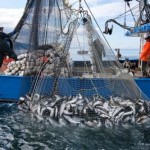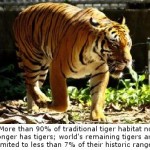The skill of a climate model depends on three criteria at a minimum, Zeng explained. The model has to use reliable data, its prediction must be better than a prediction based on chance, and its prediction must be closer to reality than a prediction that only considers the internal climate variability of the Earth system and ignores processes such as variations in solar activity, volcanic eruptions, greenhouse gas emissions from fossil fuel burning and land-use change, for example urbanization and deforestation.
“If a model doesn’t meet those three criteria, it can still predict something but it cannot claim to have skill,” Zeng said.
According to Zeng, global temperatures have increased in the past century by about 1.4 degrees Fahrenheit or 0.8 degrees Celsius on average. Barring any efforts to curb global warming from greenhouse gas emissions, the temperatures could further increase by about 4.5 degrees Fahrenheit (2.5 degrees Celsius) or more by the end of the 21st century based on these climate models.
“The scientific community is pushing policymakers to avoid the increase of temperatures by more than 2 degrees Celsius because we feel that once this threshold is crossed, global warming could be damaging to many regions,” he said.
Zeng said that climate models represent the current understanding of the factors influencing climate, and then translate those factors into computer code and integrate their interactions into the future.
“The models include most of the things we know,” he explained, “such as wind, solar radiation, turbulence mixing in the atmosphere, clouds, precipitation and aerosols, which are tiny particles suspended in the air, surface moisture and ocean currents.”
Zeng described how the group did the analysis: “With any given model, we evaluated climate predictions from 1900 into the future – 10 years, 20 years, 30 years, 40 years, 50 years. Then we did the same starting in 1901, then 1902 and so forth, and applied statistics to the results.”
Climate models divide the Earth into grid boxes whose size determines its spatial resolution. According to Zeng, state of the art is about one degree, equaling about 60 miles (100 kilometers).
“There has to be a simplification because if you look outside the window, you realize you don’t typically have a cloud cover that measures 60 miles by 60 miles. The models cannot reflect that kind of resolution. That’s why we have all those uncertainties in climate prediction.”
“Our analysis confirmed what we expected from last IPCC report in 2007,” said Sakaguchi. “Those climate models are believed to be of good skill on large scales, for example predicting temperature trends over several decades, and we confirmed that by showing that the models work well for time spans longer than 30 years and across geographical scales spanning 30 degrees or more.”
The scientists pointed out that although the IPCC issues a new report every six years, they didn’t see much change with regard to the prediction skill of the different models.
“The IPCC process is driven by international agreements and politics,” Zeng said. “But in science, we are not expected to make major progress in just six years. We have made a lot of progress in understanding certain processes, for example airborne dust and other small particles emitted from surface, either through human activity or through natural sources into the air. But climate and the Earth system still are extremely complex. Better understanding doesn’t necessarily translate into better skill in a short time.”
“Once you go into details, you realize that for some decades, models are doing a much better job than for some other decades. That is because our models are only as good as our understanding of the natural processes, and there is a lot we don’t understand.”
Michael Brunke, a graduate student in Zeng’s group who focused on ocean-atmosphere interactions, co-authored the study, which is titled “The Hindcast Skill of the CMIP Ensembles for the Surface Air Temperature Trend”.
Funding for this work was provided by NASA, National Science Foundation (NSF) and Department of Energy.
Source: By Daniel Stolte, University Communications, University of Arizona.














